stephenk
Enlightened
Disclaimer
This headlamp was kindly sent to me for review by Banggood. Product Page. Code for 30% off Nitecore NU30 at Banggood: f270c5No other payment was received for this review. A free headlamp does not stop me from being critical if required during reviews.
Introduction
The quality and functionality of headlamps on the market has improved considerably in the last few years. The Nitecore NU range, is a fairly new range of headlamps that have USB rechargeable li-ion batteries. USB charging is increasingly popular with the consumer market, as they don't need to fuss around with cylindrical li-ion or NiMH batteries and chargers.
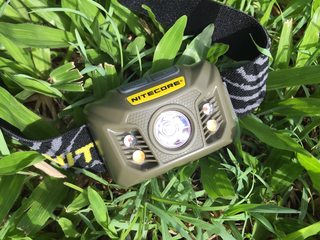
The NU30 is currently top of Nitecore's NU range, and has the following claimed features and functionality.
Product name: Nitecore NU30 XP-G2 S3 USB Rechargeable LED HeadlampMain
Emitter Type: Cree XP-G2 S3
Material: Durable PC materialsMode: Turbo,High,Mid,Ultralow,+SOS,Beacon,High CRI,Red
Lumens: 400LM,180LM,36LM,1LM,35LM,19LM
Runtime: 1h15min,22h,25h15min,330h,12h,13h
Battery Configurations: 1 x Built-in 1800mAh Li-ion battery
Switch Type: clickySwitch
Location: body side of the headlamp
Peak Beam Intensity: 3,700cd
Impact Resistant: 1.5metersMax Output: 400lumensRange: 121meters
Reflector: Smooth ReflectorWaterproof: Waterproof IP67 (Rated)
Color: Black,Army Green, Desert TanWeight: 84.8g
Size: 2.48" ×1.71" ×1.24"(with bracket)
Features:·Multi-purposes lightweight headlamp
White and red dual outputs·A XP-G2 S3 primary white LED capable of outputting 400 lumens
Incorporated Precision Digital Optics technology
Two auxiliary LEDs with high colour rendering capability: CRI ≥90 provides output at 35 lumens
Red light illumination·Built-in 1800mAh Li-ion battery
USB rechargeable with onboard charging circuit
Dual switches design offers easy one-handed operation
Built-in power indicator
4 brightness levels and 2 special modes available
Flood beam profile with 60° adjustable angle
Made from durable PC materials·Compact and lightweight
Impact resistant to 1.5 metre
Packaging
As with most Nitecore lights, the NU30 arrived in a branded cardboard box. The box contained the Nitecore NU30 XP-G2 S3 USB Rechargeable LED Headlamp, Headband, USB cord, and a well written English Manual. Along with most USB flashlights, no plug was supplied, as most people have plenty of USB plug/chargers around the house.
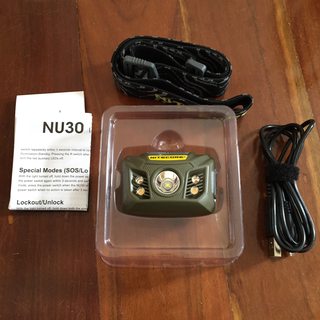
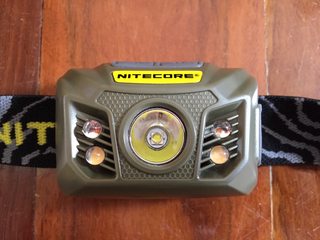
Design and Ergonomics
The Nitecore NU30 is a fairly compact plastic symmetrical moulded headlamp. There is a single, thick headstrap (around the head) which I much prefer over the twin strap (around and over the head) design. The main body is hinged from the back, and can rotate up to 60 degrees down, with four steps (15 degree increments). For night running, I had the body angled down at approximately 30 degrees. The set angle remained stable during urban night running, and due to the solid plastic
constriction there is no bouncing effect when running that occurs on tube shaped headlamps with rubber holders.
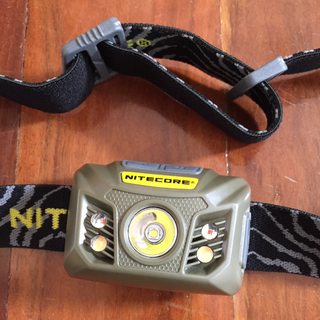
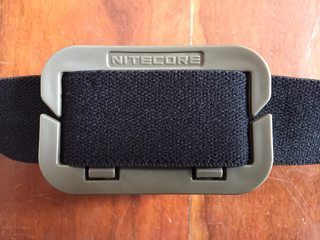
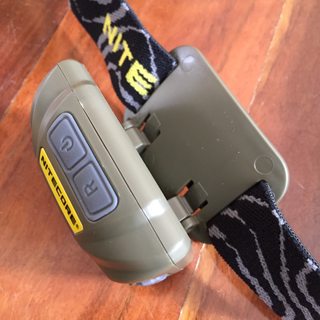
The NU30 is relatively lightweight for its output and functionality, at just 84.8g (including built in battery) Due to the plastic construction and slightly protruding auxiliary LEDs, I doubt that this headlamp would be as tough as some (heavier) aluminium headlamps. I would thus be cautious when using this headlamp for more extreme uses such as caving or rock climbing. It survived multiple 1m drops during testing, and is rated to handle 1.5m drops. There are two buttons on the top - user interface is explained in the next section. The buttons are quite large, and very useable for people wearing gloves, with fat fingers, or poor spacial awareness. A sometimes accidentally changed the angle of the light when pressing the buttons, but it only takes a second to adjust it back again.The USB charging port is located on the left hand side of the body, and has a rubber cover to stop dust and water ingress. A red light illuminates during charging, and a green light illuminates when charging has terminated/battery full. Charging from empty took 3.5 hours using a 1A iPhone 6 power supply and supplied Nitecore USB cable.
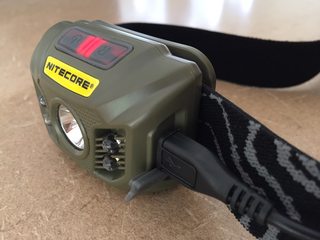
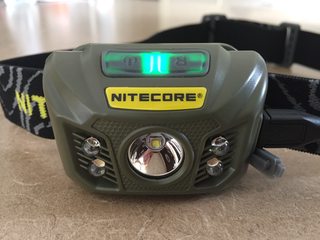
The main Cree XP-G2 emitter is located centrally, and there are two auxiliary emitters located on each side of the main emitter (four total) for symmetry. The Auxiliary emitters are two high CRI, and two red emitters. The exact emitter type for the auxiliary emitters is unknown. The light is available in black, army green, and desert tan colours which seem to be orientated towards a male market. If the NU30 sells well (which I'm sure it will) some more unisex or female orientated colours should be introduced as well. My review version was in army green. The two halves of the light are well glued together, so a teardown is quite difficult. However, having an x-ray machine handy, I've taken some x-ray images of the internals of this light. The battery appears to take up approximately 30% of the case, positioned at the back. The driver board is screwed into the front of the light. The buttons, main reflector, USB socket, and pins for the auxiliary LEDs are clearly seen.
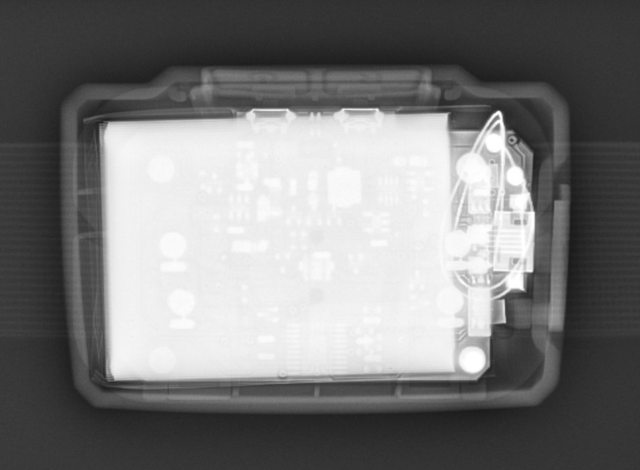
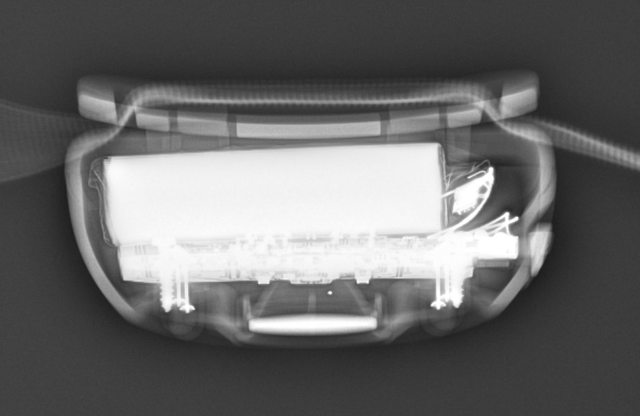
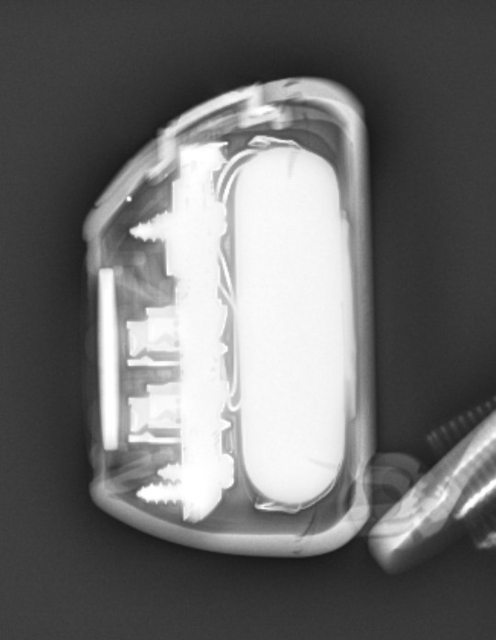
User Interface (UI)
There are two buttons on the top of the light. The "power" button controls the white light, and the R button controls the red light.
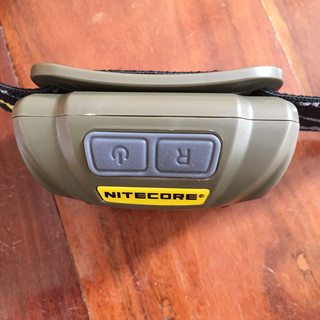
Single clicks of the power button will cycle the light through Low>Medium>High>Standby mode.
After 3 seconds, the light will turn off if this button is clicked again.
A long hold from on will take the light straight to turbo, which steps down after just 30 seconds.
A long (1 sec) hold of the "power" button from off, will turn on the high-CRI auxiliary lights. Another click will turn the high-CRI auxiliary lights off.
A very long (3 sec) hold of the "power" button from off, will cycle through SOS>Beacon modes. After 3 seconds, the light will turn off if this button is clicked again. The beacon mode has a short flash approximately every 3 seconds.
Pressing the R button will cycle the light through Red>Flashing Red>Standby. After 3 seconds, the light will turn off if the R button is pressed again. The red flashing is at approximately 1Hz.
Holding down both "power" and R buttons until the red indicator blinks will enter lockout mode. The same action is done to unlock the light.
A long (1 sec) hold of the R button will display battery capacity remaining - >50% = 3 flashes, 10-50% = 2 flashes, mid>high, it is possible to turn on the light for low mode purposes without having to cycle through blinding output first.
I like this practical mode order. When running on the high output, the output steps down in a linear fashion over 300 minutes, until it reaches around 20 lumens, where the light continued to run for another 15 hours, where it briefly dropped to moonlight level, and finally gave up the ghost. When the battery is heavily discharged, the high and turbo mode will be unavailable. When the battery is close to the end of the runtime, selecting the high-CRI mode will kill the output. Due to the gradual step down, and long 20 lumen runtime, there is no sudden turn off that could leave a user in the dark unexpectedly until around the 20 hour mark. Usefully, the light can be used when charging via USB, and thus the light could be run off a power bank if required. The internal 1800mAh li-ion (li-polymer) battery allows for considerably longer runtimes compared to 14500 class lights.
Beam, Output, and Runtimes
The main beam uses a Cree XP-G2 emitter and smooth reflector which is relatively deep for a headlamp. There is a small and very bright hotspot allowing for improved throw compared to flood only headlamps (such as the Thrunite TH20). However, whilst the spill beam is fairly wide which is essential for a headlamp, the spill beam doesn't quite cover as wide an angle as flood only headlamps (such as the Thrunite TH20 again). I found the extra throw useful for focussing my SLR camera when taking night or light painting photos, and also useful for night treks. However, for night running, I would prefer a slightly wider angle spill beam to allow both illumination of my next step with the spill beam, as well the hotspot illuminating further into the distance rather than 2 to 3m in front of me. Saying that, having the hotspot 2m in front of me allowed for easier dodging of pesky cane toads!
The tint of the main beam is at the warmer end of cool white (estimated 5700k), and the usual 70CRI+ fare that we are used to on more recent LEDs. The cool white beam has a hint of yellow in the hotspot, with no hint of blue or green. This CRI is good enough for most purposes, but I would personally have preferred a high CRI main beam as well as auxiliary beam. Thankfully, Nitecore will soon be releasing a high CRI version of the Nitecore NU30, called the NU30CRI with a Nichia 219B emitter. Thus if you want slightly more output and throw go for the Nitecore NU30. If you want a bright high-CRI main beam with less of a hotspot, then go for the Nitecore NU30CRI when it is released. Full marks to Nitecore for providing these options.
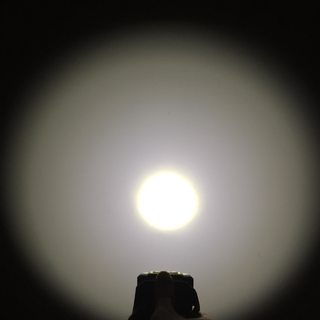
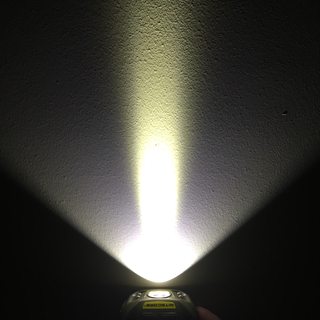
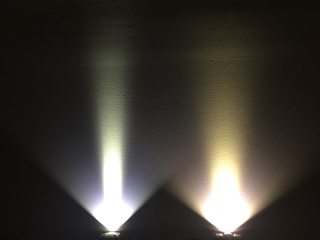
Above – Beam comparison Nitecore NU30 (left) and Thrunite TH20 (right)
Turbo mode was measured at approximately 450 lumens (higher than claimed output), for the first 30 seconds, before reducing to approximately 220 lumens after 60 seconds. As the light steps down from turbo quite quickly due to the lack of heat sinking in the plastic body, the advertised turbo runtime is somewhat theoretical as it cannot be achieved continuously. Another reviewer found an undocumented "bug" where turbo remains on if red is turned on before activating turbo, and red is then turned off. This was reproducible, but needs to be used carefully so as to not overheat the light after a few minutes (as per any light with no automatic step down). The throw in turbo can usefully illuminate up to around 100m.
High mode is approximately 220 lumens (again higher than claimed output), and the next mode down is approximately 40 lumens. Personally, I'd prefer a mode around 75-100 lumens for urban night running, though the 220 lumen high mode is great for trail running. The 1 lumen mode is useful for finding things in a camera bag without disturbing others, and also very useful as a night light for camping and other situations. As the mode order is low>mid>high, it is possible to turn on the light for low mode purposes without having to cycle through blinding output first. I like this practical mode order.
When running on the high output, the output steps down in a linear fashion over 300 minutes, until it reaches around 20 lumens, where the light continued to run for another 15 hours, where it briefly dropped to moonlight level, and finally gave up the ghost. When the battery is heavily discharged, the high and turbo mode will be unavailable. When the battery is close to the end of the runtime, selecting the high-CRI mode will kill the output. Due to the gradual step down, and long 20 lumen runtime, there is no sudden turn off that could leave a user in the dark unexpectedly until around the 20 hour mark. Usefully, the light can be used when charging via USB, and thus the light could be run off a power bank if required. The internal 1800mAh li-ion (li-polymer) battery allows for considerably longer runtimes compared to 14500 class lights.
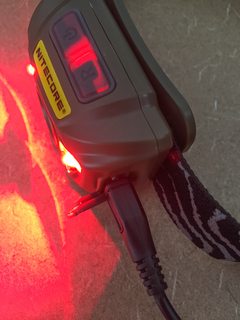
The auxiliary high-CRI beam outputs approximately 35 lumens. This high-CRI beam is slightly warmer than the main beam, with a rosy pink tint, and makes illuminated colours more vivid, especially reds. Despite using two seperate LEDs, the beam is floody and impressively smooth with no beam artefacts. The high-CRI beam is useful for illuminating up to 3 to 6m (depending on dark adjustment of eyes). Sadly, the high-CRI beam cannot be used at the same time as the main beam (or red beam).
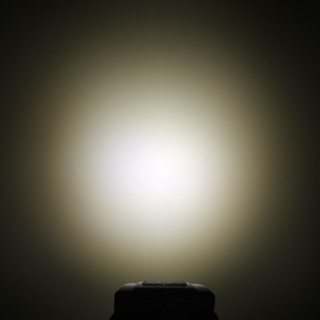
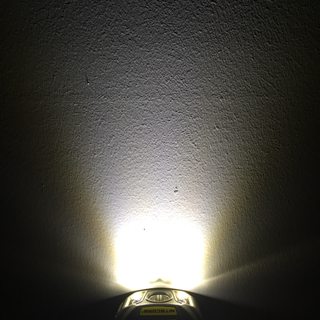
The auxiliary red beam is approximately 16 lumens. Unlike the high-CRI beam, the red beam has a lot of beam artefact when white wall hunting. Outside, the beam artefact is much less noticeable, and not an issue. The red light can be useful for people who don't want to loose dark adjusted eyesight, for example astronomers, and some photographers. The red beam is sufficient for illuminating up to 2 to 4m (depending on dark adjustment of eyes). Note: the yellow area in the auxiliary red beam shots is where the camera was over-exposing the beam - the beam is 100% red in reality.
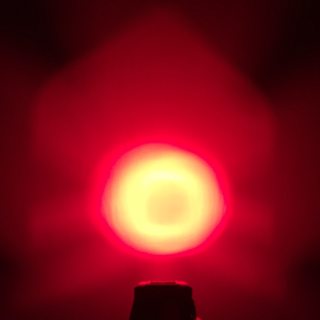
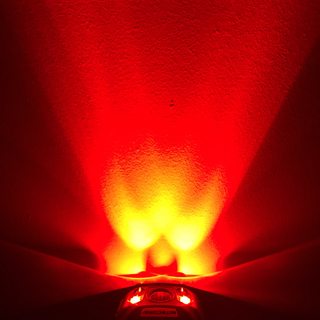
The red beam can be used at the same time as the main beam, just in case anyone wants a funky pink beam ;-)
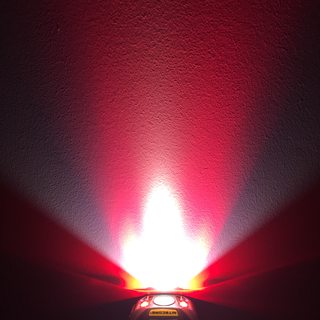
No PWM was detected in low, medium,high, red, and high-CRI modes.
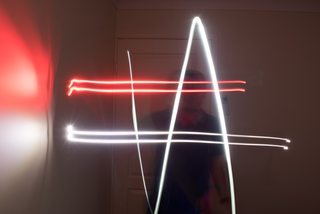
Conclusion
I really enjoyed using the Nitecore NU30 for multiple purposes, and this light lends itself to situations where throw is required rather than a super-wide flood beam. With lots of functions, it is the swiss army knife of headlamps. With a single strap headband, relatively light weight, and ergonomic design it is a pleasure to have strapped to my head. The user interface has lots of options, but is still easy to learn. The red and high-CRI auxiliary beams are useful for short distance illumination. Runtime is quite decent too, and the gradual output step down will not suddenly leave you in the dark. Those who would prefer a main beam with high-CRI output and less of a hotspot, should look at the forthcoming NU30CRI model instead, which has a Nichia 219B emitter instead of Cree XP-G2. I would highly recommend this light to consumers wanting an ergonomic, feature packed headlamp for general purpose use. Nitecore need to be congratulated on such a well designed line up of lights in the NU range, that also has market leading options for high-CRI requirements.
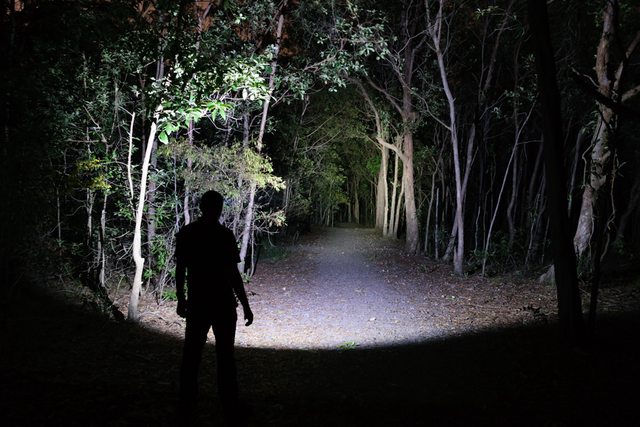
Outdoor beamshot - 6 sec, f/5.6, ISO400; +0.9EV exposure in post-processing.Video coming soon!
This headlamp was kindly sent to me for review by Banggood. Product Page. Code for 30% off Nitecore NU30 at Banggood: f270c5No other payment was received for this review. A free headlamp does not stop me from being critical if required during reviews.
Introduction
The quality and functionality of headlamps on the market has improved considerably in the last few years. The Nitecore NU range, is a fairly new range of headlamps that have USB rechargeable li-ion batteries. USB charging is increasingly popular with the consumer market, as they don't need to fuss around with cylindrical li-ion or NiMH batteries and chargers.

The NU30 is currently top of Nitecore's NU range, and has the following claimed features and functionality.
Product name: Nitecore NU30 XP-G2 S3 USB Rechargeable LED HeadlampMain
Emitter Type: Cree XP-G2 S3
Material: Durable PC materialsMode: Turbo,High,Mid,Ultralow,+SOS,Beacon,High CRI,Red
Lumens: 400LM,180LM,36LM,1LM,35LM,19LM
Runtime: 1h15min,22h,25h15min,330h,12h,13h
Battery Configurations: 1 x Built-in 1800mAh Li-ion battery
Switch Type: clickySwitch
Location: body side of the headlamp
Peak Beam Intensity: 3,700cd
Impact Resistant: 1.5metersMax Output: 400lumensRange: 121meters
Reflector: Smooth ReflectorWaterproof: Waterproof IP67 (Rated)
Color: Black,Army Green, Desert TanWeight: 84.8g
Size: 2.48" ×1.71" ×1.24"(with bracket)
Features:·Multi-purposes lightweight headlamp
White and red dual outputs·A XP-G2 S3 primary white LED capable of outputting 400 lumens
Incorporated Precision Digital Optics technology
Two auxiliary LEDs with high colour rendering capability: CRI ≥90 provides output at 35 lumens
Red light illumination·Built-in 1800mAh Li-ion battery
USB rechargeable with onboard charging circuit
Dual switches design offers easy one-handed operation
Built-in power indicator
4 brightness levels and 2 special modes available
Flood beam profile with 60° adjustable angle
Made from durable PC materials·Compact and lightweight
Impact resistant to 1.5 metre
Packaging
As with most Nitecore lights, the NU30 arrived in a branded cardboard box. The box contained the Nitecore NU30 XP-G2 S3 USB Rechargeable LED Headlamp, Headband, USB cord, and a well written English Manual. Along with most USB flashlights, no plug was supplied, as most people have plenty of USB plug/chargers around the house.


Design and Ergonomics
The Nitecore NU30 is a fairly compact plastic symmetrical moulded headlamp. There is a single, thick headstrap (around the head) which I much prefer over the twin strap (around and over the head) design. The main body is hinged from the back, and can rotate up to 60 degrees down, with four steps (15 degree increments). For night running, I had the body angled down at approximately 30 degrees. The set angle remained stable during urban night running, and due to the solid plastic
constriction there is no bouncing effect when running that occurs on tube shaped headlamps with rubber holders.



The NU30 is relatively lightweight for its output and functionality, at just 84.8g (including built in battery) Due to the plastic construction and slightly protruding auxiliary LEDs, I doubt that this headlamp would be as tough as some (heavier) aluminium headlamps. I would thus be cautious when using this headlamp for more extreme uses such as caving or rock climbing. It survived multiple 1m drops during testing, and is rated to handle 1.5m drops. There are two buttons on the top - user interface is explained in the next section. The buttons are quite large, and very useable for people wearing gloves, with fat fingers, or poor spacial awareness. A sometimes accidentally changed the angle of the light when pressing the buttons, but it only takes a second to adjust it back again.The USB charging port is located on the left hand side of the body, and has a rubber cover to stop dust and water ingress. A red light illuminates during charging, and a green light illuminates when charging has terminated/battery full. Charging from empty took 3.5 hours using a 1A iPhone 6 power supply and supplied Nitecore USB cable.


The main Cree XP-G2 emitter is located centrally, and there are two auxiliary emitters located on each side of the main emitter (four total) for symmetry. The Auxiliary emitters are two high CRI, and two red emitters. The exact emitter type for the auxiliary emitters is unknown. The light is available in black, army green, and desert tan colours which seem to be orientated towards a male market. If the NU30 sells well (which I'm sure it will) some more unisex or female orientated colours should be introduced as well. My review version was in army green. The two halves of the light are well glued together, so a teardown is quite difficult. However, having an x-ray machine handy, I've taken some x-ray images of the internals of this light. The battery appears to take up approximately 30% of the case, positioned at the back. The driver board is screwed into the front of the light. The buttons, main reflector, USB socket, and pins for the auxiliary LEDs are clearly seen.



User Interface (UI)
There are two buttons on the top of the light. The "power" button controls the white light, and the R button controls the red light.

Single clicks of the power button will cycle the light through Low>Medium>High>Standby mode.
After 3 seconds, the light will turn off if this button is clicked again.
A long hold from on will take the light straight to turbo, which steps down after just 30 seconds.
A long (1 sec) hold of the "power" button from off, will turn on the high-CRI auxiliary lights. Another click will turn the high-CRI auxiliary lights off.
A very long (3 sec) hold of the "power" button from off, will cycle through SOS>Beacon modes. After 3 seconds, the light will turn off if this button is clicked again. The beacon mode has a short flash approximately every 3 seconds.
Pressing the R button will cycle the light through Red>Flashing Red>Standby. After 3 seconds, the light will turn off if the R button is pressed again. The red flashing is at approximately 1Hz.
Holding down both "power" and R buttons until the red indicator blinks will enter lockout mode. The same action is done to unlock the light.
A long (1 sec) hold of the R button will display battery capacity remaining - >50% = 3 flashes, 10-50% = 2 flashes, mid>high, it is possible to turn on the light for low mode purposes without having to cycle through blinding output first.
I like this practical mode order. When running on the high output, the output steps down in a linear fashion over 300 minutes, until it reaches around 20 lumens, where the light continued to run for another 15 hours, where it briefly dropped to moonlight level, and finally gave up the ghost. When the battery is heavily discharged, the high and turbo mode will be unavailable. When the battery is close to the end of the runtime, selecting the high-CRI mode will kill the output. Due to the gradual step down, and long 20 lumen runtime, there is no sudden turn off that could leave a user in the dark unexpectedly until around the 20 hour mark. Usefully, the light can be used when charging via USB, and thus the light could be run off a power bank if required. The internal 1800mAh li-ion (li-polymer) battery allows for considerably longer runtimes compared to 14500 class lights.
Beam, Output, and Runtimes
The main beam uses a Cree XP-G2 emitter and smooth reflector which is relatively deep for a headlamp. There is a small and very bright hotspot allowing for improved throw compared to flood only headlamps (such as the Thrunite TH20). However, whilst the spill beam is fairly wide which is essential for a headlamp, the spill beam doesn't quite cover as wide an angle as flood only headlamps (such as the Thrunite TH20 again). I found the extra throw useful for focussing my SLR camera when taking night or light painting photos, and also useful for night treks. However, for night running, I would prefer a slightly wider angle spill beam to allow both illumination of my next step with the spill beam, as well the hotspot illuminating further into the distance rather than 2 to 3m in front of me. Saying that, having the hotspot 2m in front of me allowed for easier dodging of pesky cane toads!
The tint of the main beam is at the warmer end of cool white (estimated 5700k), and the usual 70CRI+ fare that we are used to on more recent LEDs. The cool white beam has a hint of yellow in the hotspot, with no hint of blue or green. This CRI is good enough for most purposes, but I would personally have preferred a high CRI main beam as well as auxiliary beam. Thankfully, Nitecore will soon be releasing a high CRI version of the Nitecore NU30, called the NU30CRI with a Nichia 219B emitter. Thus if you want slightly more output and throw go for the Nitecore NU30. If you want a bright high-CRI main beam with less of a hotspot, then go for the Nitecore NU30CRI when it is released. Full marks to Nitecore for providing these options.



Above – Beam comparison Nitecore NU30 (left) and Thrunite TH20 (right)
Turbo mode was measured at approximately 450 lumens (higher than claimed output), for the first 30 seconds, before reducing to approximately 220 lumens after 60 seconds. As the light steps down from turbo quite quickly due to the lack of heat sinking in the plastic body, the advertised turbo runtime is somewhat theoretical as it cannot be achieved continuously. Another reviewer found an undocumented "bug" where turbo remains on if red is turned on before activating turbo, and red is then turned off. This was reproducible, but needs to be used carefully so as to not overheat the light after a few minutes (as per any light with no automatic step down). The throw in turbo can usefully illuminate up to around 100m.
High mode is approximately 220 lumens (again higher than claimed output), and the next mode down is approximately 40 lumens. Personally, I'd prefer a mode around 75-100 lumens for urban night running, though the 220 lumen high mode is great for trail running. The 1 lumen mode is useful for finding things in a camera bag without disturbing others, and also very useful as a night light for camping and other situations. As the mode order is low>mid>high, it is possible to turn on the light for low mode purposes without having to cycle through blinding output first. I like this practical mode order.
When running on the high output, the output steps down in a linear fashion over 300 minutes, until it reaches around 20 lumens, where the light continued to run for another 15 hours, where it briefly dropped to moonlight level, and finally gave up the ghost. When the battery is heavily discharged, the high and turbo mode will be unavailable. When the battery is close to the end of the runtime, selecting the high-CRI mode will kill the output. Due to the gradual step down, and long 20 lumen runtime, there is no sudden turn off that could leave a user in the dark unexpectedly until around the 20 hour mark. Usefully, the light can be used when charging via USB, and thus the light could be run off a power bank if required. The internal 1800mAh li-ion (li-polymer) battery allows for considerably longer runtimes compared to 14500 class lights.

The auxiliary high-CRI beam outputs approximately 35 lumens. This high-CRI beam is slightly warmer than the main beam, with a rosy pink tint, and makes illuminated colours more vivid, especially reds. Despite using two seperate LEDs, the beam is floody and impressively smooth with no beam artefacts. The high-CRI beam is useful for illuminating up to 3 to 6m (depending on dark adjustment of eyes). Sadly, the high-CRI beam cannot be used at the same time as the main beam (or red beam).


The auxiliary red beam is approximately 16 lumens. Unlike the high-CRI beam, the red beam has a lot of beam artefact when white wall hunting. Outside, the beam artefact is much less noticeable, and not an issue. The red light can be useful for people who don't want to loose dark adjusted eyesight, for example astronomers, and some photographers. The red beam is sufficient for illuminating up to 2 to 4m (depending on dark adjustment of eyes). Note: the yellow area in the auxiliary red beam shots is where the camera was over-exposing the beam - the beam is 100% red in reality.


The red beam can be used at the same time as the main beam, just in case anyone wants a funky pink beam ;-)

No PWM was detected in low, medium,high, red, and high-CRI modes.

Conclusion
I really enjoyed using the Nitecore NU30 for multiple purposes, and this light lends itself to situations where throw is required rather than a super-wide flood beam. With lots of functions, it is the swiss army knife of headlamps. With a single strap headband, relatively light weight, and ergonomic design it is a pleasure to have strapped to my head. The user interface has lots of options, but is still easy to learn. The red and high-CRI auxiliary beams are useful for short distance illumination. Runtime is quite decent too, and the gradual output step down will not suddenly leave you in the dark. Those who would prefer a main beam with high-CRI output and less of a hotspot, should look at the forthcoming NU30CRI model instead, which has a Nichia 219B emitter instead of Cree XP-G2. I would highly recommend this light to consumers wanting an ergonomic, feature packed headlamp for general purpose use. Nitecore need to be congratulated on such a well designed line up of lights in the NU range, that also has market leading options for high-CRI requirements.

Outdoor beamshot - 6 sec, f/5.6, ISO400; +0.9EV exposure in post-processing.Video coming soon!
Last edited:

